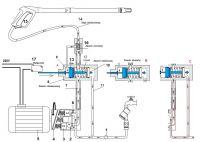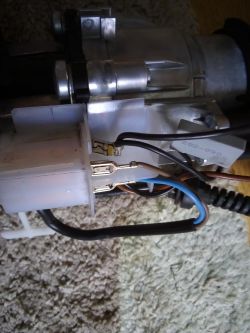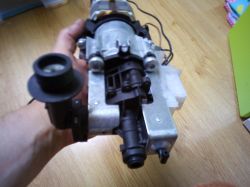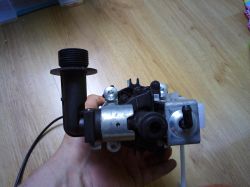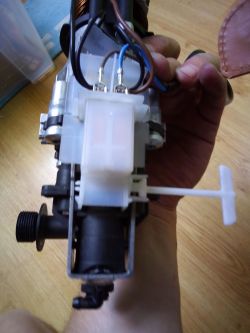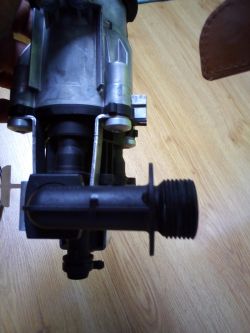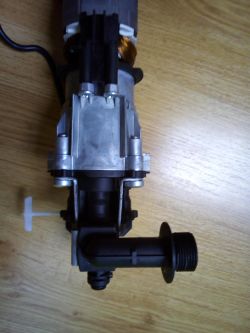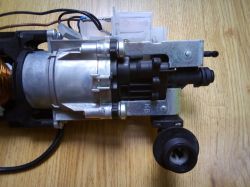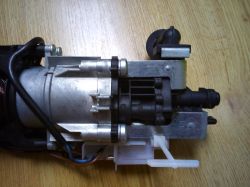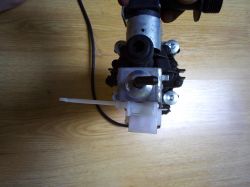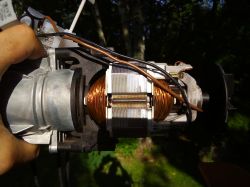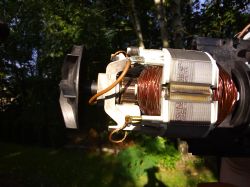For a better understanding of the pressure washer, I put a description.
I note that this is a Makita HW130 washer, I think that other companies' solutions are similar.
The washer is connected to the water intake through the filter 1 (strainer), then the water goes to the pump and from it under increased pressure it is pumped through the pressure valve 8 and the check valve to the lance. From the non-return valve, water is also fed through the channel to the chamber 9 to the piston 13 of the pressure valve. The pressure valve consists of a piston 13, a spring and a cone valve 10, which is closed during the operation of the washer. A cone valve 10, M3 thread, is screwed onto the stem 12, the aim being to accurately set on / off. washer.
Fig. A shows the washer during operation. When we close the lance (release the trigger), the pressure will increase in the system, also in chamber 9, the valve will open as shown in fig. B and turn off the washer by disconnecting the switch 17. Opening the valve 10 will cause the water pressure from the pump and the pressure valve to escape through cone valve and channel 11 for water intake. In the chamber 9 and in the pressure hose, the pressure will remain high, which will not allow the washer to turn on, this is prevented by a check valve 16. It can be seen that the washer left in the "stand by" state will occasionally start automatically for a while and this is because the pressure in chamber 9 and the hose will drop, due to leaks. What happens now, when the pressure valve fails (the conical valve closes endlessly, leaking orings, in the washer the stem is cracked at the transition from fi 4mm to fi 3mm). After pressing the trigger 15 lance, the pressure in the chamber 9 drops, the spring closes the valve, the engine starts, the pump generates pressure, water goes to the lance and through a closed cone valve to the outlet through channel 11, as a result of which the lance has low pressure. When we close the lance now, the washer will not be turned off because the pump cannot build pressure in chamber 9 enough to push the pressure valve, because all the water is pushed into the outlet of the network, which is illustrated in Fig. C.
In this condition the washer can work without any damage.
